The COVID-19 pandemic – and everything that has come along with it – not only changed our lives, but the way we do business. From lockdowns, to virtual environments, and strategy and operational shifts, businesses and their teams have had to adapt, and very quickly.
The budget planning process hasn’t been an exception. Streamlining systems for a new era as well as for long-term success in an increasingly unpredictable world isn’t just important, but necessary. How has the biggest disruption for consumers and business in recent history had on budget decisions businesses are making – and what insights can we glean from them to strengthen agility going forward?
B2B in the Black’s Adviser Council polled 18 CMO and CFO respondents in the U.S. across the software & IT services, finance, manufacturing, and marketing industries to find out.
The results in the “Report for Agile Planning: COVID’s Impact on the Budget Planning” survey show that changes brought on by the pandemic were swift – and that they’ll continue to transform and impact budget planning in the future, too.
Internal Research Teams Drive Decisions
In a new pandemic era, internal research teams gathering and analyzing data as well as peer groups make up the bulk of the data gathering process when it comes to decision making versus broader initiatives like online news sources or industry analysts, suggesting that adaptability needs vary across businesses, and a personalized approach is a key factor for growth.
While for most, company-specific KPIs haven’t triggered immediate or drastic action, over 37% say there are indeed certain benchmarkers that impact quick strategic planning, like monitoring target industries and adjusting approach based on shifts in those realms, growth in digital ad spend, as well as closely watched pipeline and retention metrics. E-commerce sentiment and retail spending are also important considerations. With the pandemic accelerating the shift to digital commerce and communication faster than ever before, enterprises must transform and adjust to meet those needs and expectations.
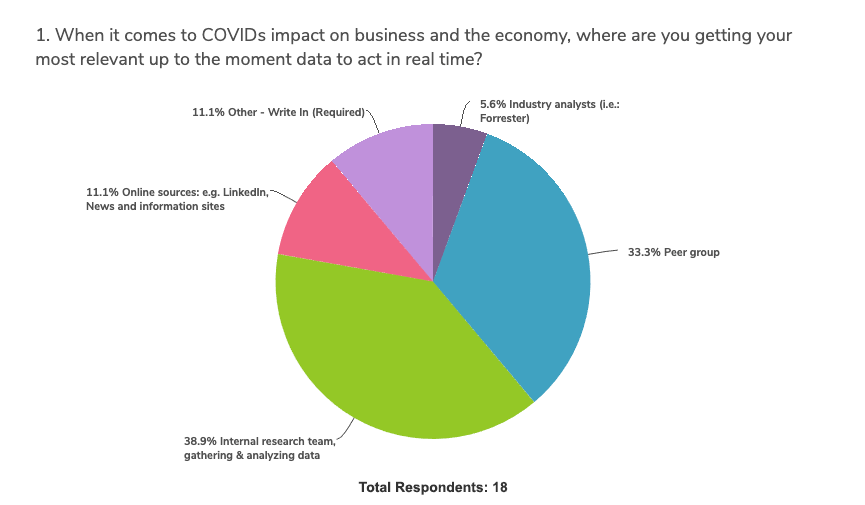
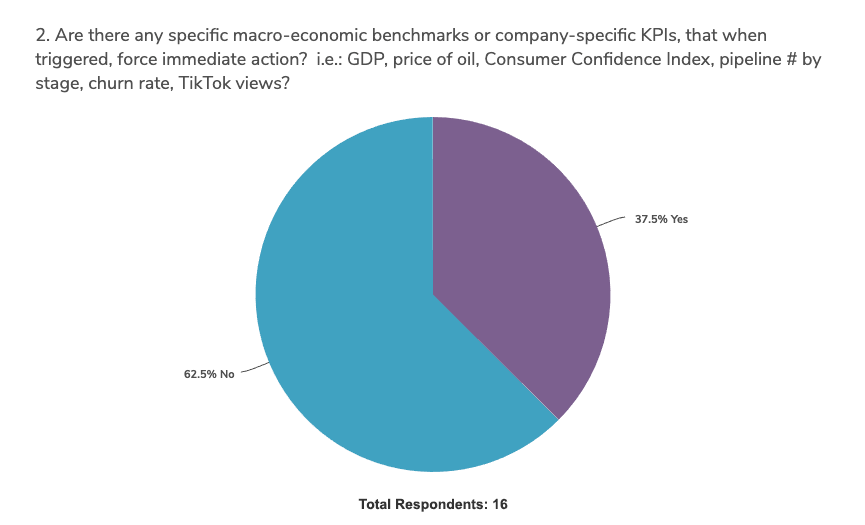
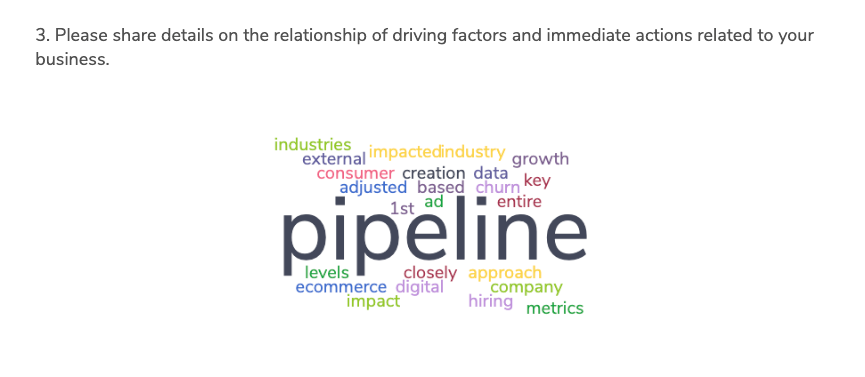
Balance Between Profit and People are Key During Downturns
As the economy shifts, so do budgets and priorities. What was planned for the beginning of the year didn’t fly as the pandemic raged on in 2020.
For a majority of respondents, a balance of both revenue/profitability and people and culture are the most important factors when it comes to decision making during times when financial metrics are off-target or budget. As businesses closed, and communication moved almost exclusively into the virtual realm, supporting workforces in a confusing and uncertain time became a significant consideration.
This volatility also caused businesses to revisit their budgets more frequently. While there was more variation between budget visits in a pre-pandemic world between semi-annual and annual visits, quarterly planning has seen a sharp rise this year.
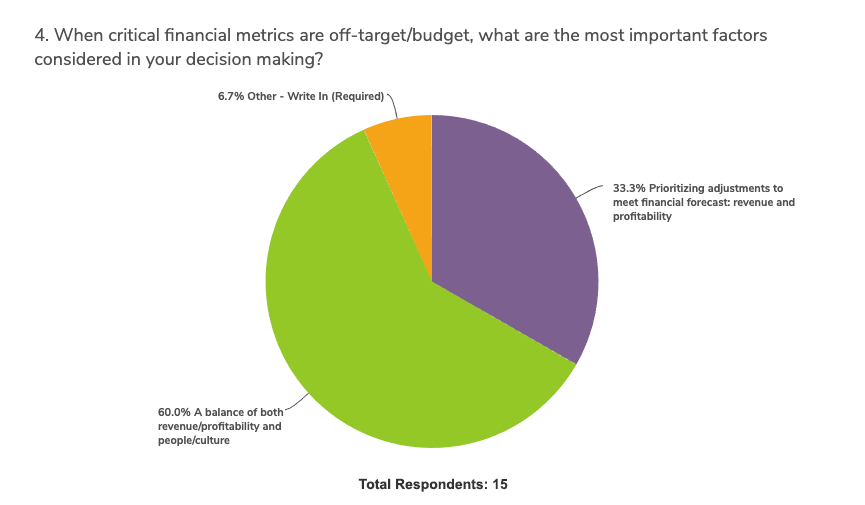
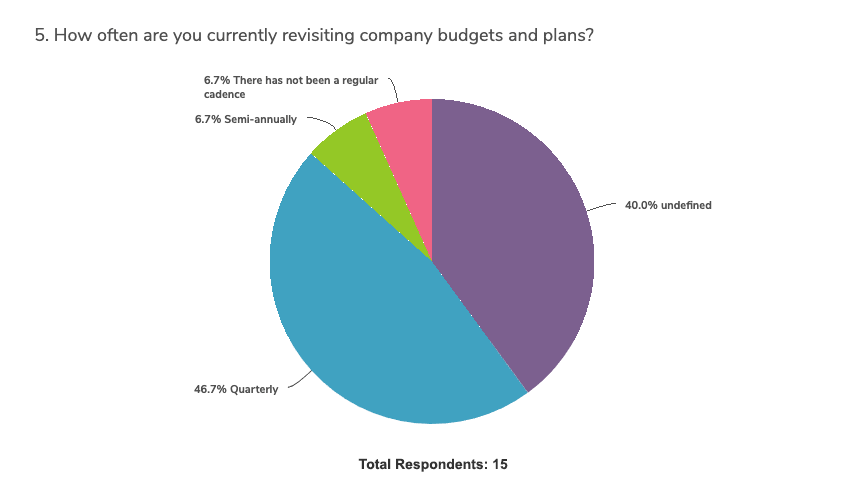
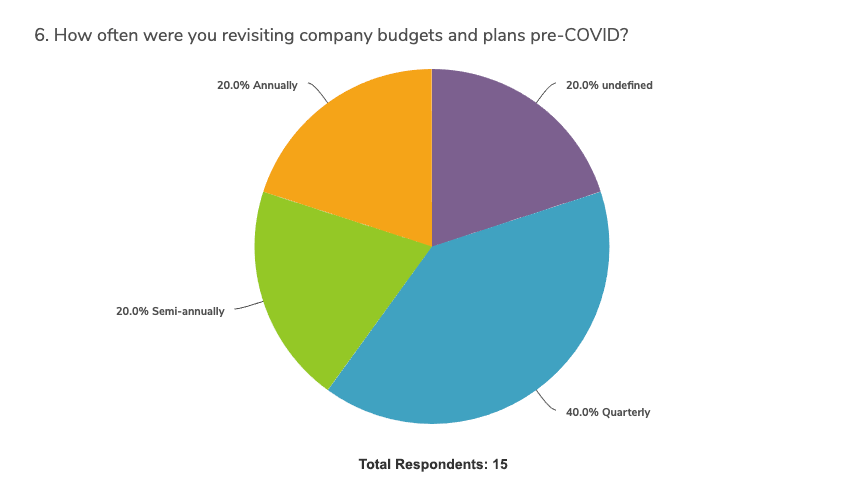
Flexibility is the Future of Budget Planning
The year might be over soon, but the pandemic isn’t. While we cautiously turn the corner to 2021, what does that mean when it comes to an increase or decrease in marketing budget? Virtually all respondents say that they’ll be increasing budgets for 2021, and it’s no surprise where their largest increase can be found: digital advertising. The focus seems to align with industry-wide trends, including the rapid traditional to digital shift and growth in digital advertising in the Covid-19 era.
Marketing and technology services, as well as brand awareness and staffing are also important to respondents. So what’s driving their decisions? Flexibility and empowering teams are some of the biggest factors, but so is the need for accurate data, too. Most say that they think budget planning will return to a pre-Covid state in 1 year, while 20% have taken a more optimistic route and predict a return in 6 months.
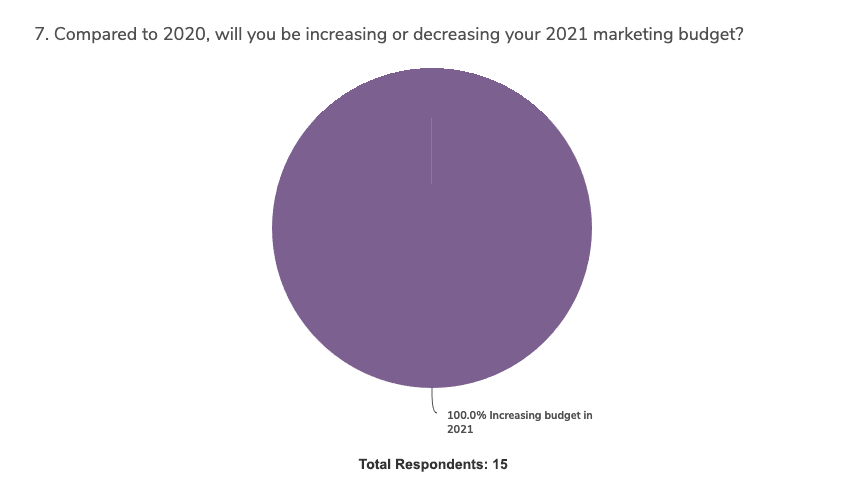
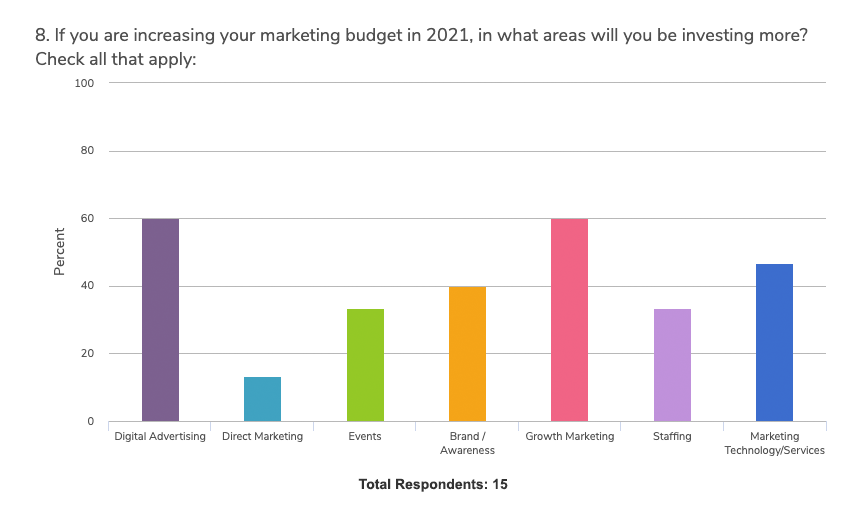
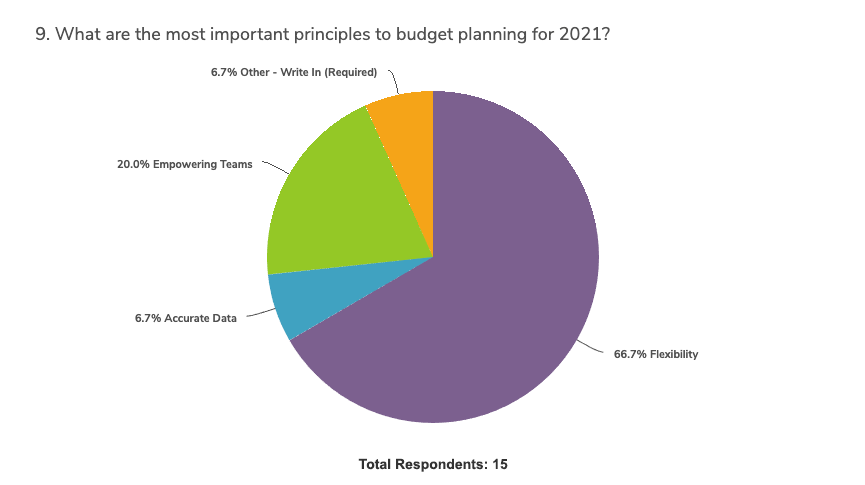
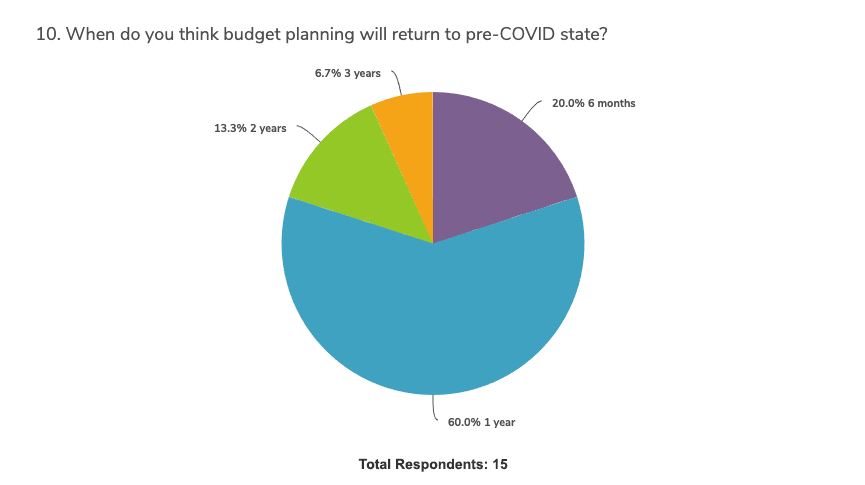
Conclusion
Improving business and streamlining operations in the current climate means being ready not only for quick changes that affect strategic planning, but thinking ahead for future ones. In these uncertain times, forward-looking companies are increasingly including flexibility as one of the most important priorities when it comes to budget planning, whether that means adopting digital trends, focusing on growth marketing to maximize customer utilization, or restructuring teams to help them drive revenue and growth.
